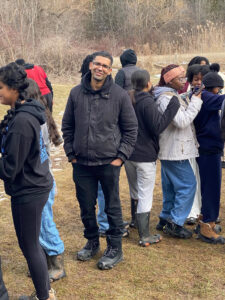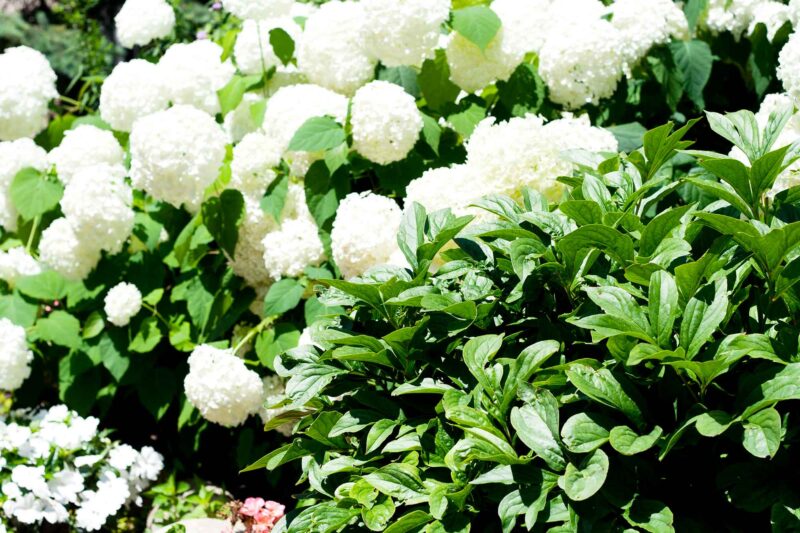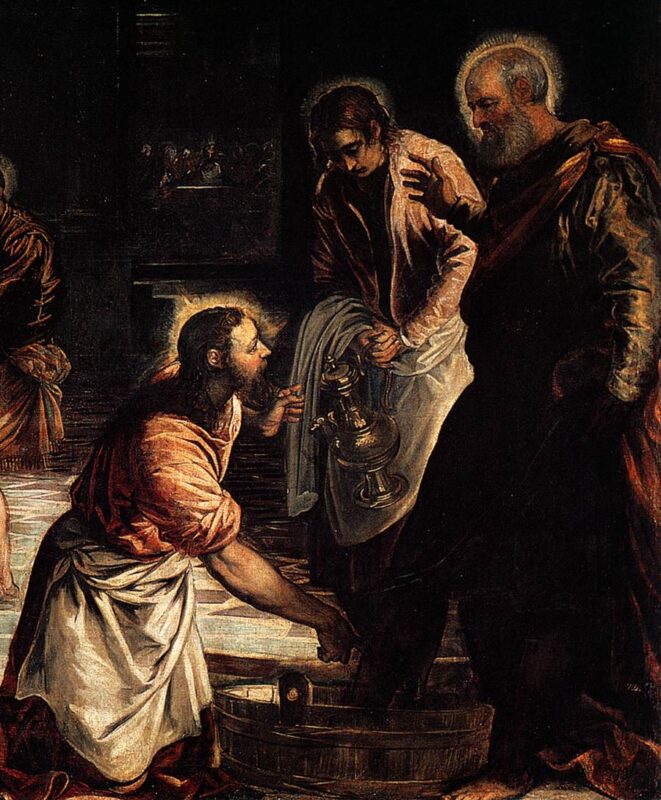Andrew Selvam is an alum of the Faculty of Theology who serves as a chaplaincy leader at St. Marguerite d’Youville Catholic Secondary School in Brampton, ON. In his spare time, he…works with kids, so there is no spare time, lol.
Not too long ago, around this time of year, it felt like we were in a different world – a world transformed, where everyone stood a distance apart, where the environment had an opportunity to reset, where you could only see a third of a person’s face and where the classroom was accessible through a computer screen. Fast forward four years and it seems as if life as returned back to normal, that hope has returned, when at times it didn’t seem that it would.
In the latter days of Lent, we are reminded of this beautiful season of prayer, fasting and almsgiving. The imagery of the season reminds us of the wilderness in which Jesus spends his time as he begins to embark on his ministry.
The season of Lent has always been an opportunity for me to reflect on mine. Now a little closer to home, but in a much larger school, the ministry God has called me to at St. Marguerite d’Youville Catholic Secondary School has changed from my time in South Mississauga. Still very much focused on building community, faith formation, and service opportunities, I get to work with a pretty dynamic community, diverse in nature and energetic to say the least. Every day is an opportunity to engage with students in a way that allows me to accompany them in the desert of whatever they might be going through, and their presence coincidentally does the same for me. No day in the wilderness of teenagers is ever the same, and I don’t think I would have it any other way.

The last days of Lent slowly move towards Holy Week, a period of time where we reflect on the suffering and death of Jesus, but His immense love bursts forth in joy and victory when the stone is rolled away from his tomb three days later. It’s a reminder that Easter is anticipation, Easter is hope, Easter is true joy.
Every morning, I have kids without fail in my office, chatting it up, greeting their friends (they haven’t seen in less than 12 hours) and always asking for food. When I’m not in front of the computer or prepping for the next event in the school, I get the privilege of talking to kids about their lives, about what makes them tick, about their relationships and the status of them, not only about their struggles, but their joys. When I’m not in the office, you can guarantee I am reminded! But each day and most interactions are an opportunity for a little Easter on the daily, a reminder of the joy and hope of young people.
Asking students to commit to their faith is never an easy task. Our schools are the second parent of learning in all aspects for young people. But it’s a challenge that I’ve enjoyed for the last 18 years of education, where there is never a dull moment, and where the reward of seeing a young person change the world in their own way is its own Easter-like reward. The student who still comes to chaplaincy seven months later, the increasing number of students attending mass on a Friday morning at 7:30 am, the students willing to take up space as they embrace their culture and personal excellence, the students who make a school dance feel like a wholesome family celebration, and students ready to hear the cry of those who go without and respond in various ways.
It is said that we are called to be a resurrection people, a people of hope, and I think this becomes increasingly possible when young people are around. From the ones I encounter at school, in my parish youth choir, and youth ministry, I get reminded every day that there is hope, that there is love, and that there is joy! I am insistent on the fact that the Holy Spirit lurks through the walls of every school building, just waiting to get stirred and activated. It always gives me hope to know that young people make that happen. It doesn’t happen overnight, or in three days even, but when the spirit and glory of God is around, transformation happens everywhere, including for me. Hallelujah is a form of praise to God and while it’s a word, it truly encompasses the many ways young people have glorified him in their actions, regardless of their stories and histories. St. John Paul II reminds us firmly that we are an Easter people and hallelujah is our song. I am glad to say that I work with and serve Easter people every day and because of the young people I work with, hallelujah has become our jam!
Read other InsightOut posts.
Carla Thomas is a member of the Dominican Sisters of St. Catherine of Siena, based in Trinidad and Tobago, West Indies. She is a national of Guyana, South America, and worked at the Ministry of Foreign Affairs for several years. Carla is passionate about young adult ministry and adult faith formation. She sums up her self-understanding as a Dominican by means of the following bible quote, “But how are they to call on one in whom they have not believed? And how are they to believe in one of whom they have never heard? And how are they to hear without someone to proclaim him? And how are they to proclaim him unless they are sent? As it is written, ‘How beautiful are the feet of those who bring good news!’” (Romans 10:14-15). At present, Carla is involved in parish ministry among Caribbean nationals in Toronto. She is looking forward to gardening again this summer and, hopefully, to visit a few more places in and around Ontario. She is a doctoral student in the Faculty of Theology and is developing a thesis prospectus at the intersection of family theology and ecclesiology.

This Is the Day the Lord Has Made
Alleluia! Christ is risen! This is the day the Lord has made; let us rejoice and be glad! Alleluia!
Dear Easter, it is wonderful that you are here again! You are truly one of the best times of the year and I delight in the signs of your presence everywhere. Thank you for bringing your friend, Spring. You began to alert me about two weeks ago that you were just around the corner when I noticed the new life springing up all around. The perennials have begun to emerge promising to bring a feast of color to the front lawn soon and I admit that I have been eagerly keeping an eye on the trees next door looking for the first sign of leaves. In this neighborhood, the children have begun to play on the sidewalk again and some parents have hung Easter eggs on trees. You are welcomed with joy for you bring re-birth, new life, hope and God’s promise of faithful love for the world.
As I reflect on the hope that this season represents two different kinds of events come to mind. First, in my homeland of Guyana, South America, Easter is kite-flying season. It is a national tradition that on Easter Monday families would spend the day outdoors enjoying a picnic and helping children to raise their kites in the air. I consider the sight of hundreds of kites dotting the sky throughout the day to be one of the most beautiful experiences of the Easter season. From an early age I learned to associate this event with the resurrection. Catechists used this local tradition as a symbol to help children understand in faith the biblical testimony that Jesus rose from the dead and that He is truly alive. While Easter is a Christian celebration, kite-flying is for everyone. On Easter Monday, social and political struggles are transcended as communities share in a day of fraternity, friendship and mutual goodwill. This cherished national tradition provides for the people of Guyana a glimpse of the reconciled unity and hope promised by the resurrection of Christ and articulated recently in Pope Francis’ encyclical letter Fratelli Tutti.
The second event is the Holy Saturday liturgy during which the Elect receive the sacraments of Christian initiation. Having served on RCIA teams in parishes in Guyana as well as Trinidad and Tobago, I would say that there is no greater joy that night than witnessing the baptism of new members who were preparing for that moment for at least two years, in most cases. Their faces are usually filled with peace and hope as they look forward to life as Christians. Indeed, the newly-baptised often become much more enthusiastic members of their parish communities than life-long Christians. Their journey as neophytes continues throughout the Easter season as they move into the period of the mystagogia until Pentecost. The RCIA renews parishes. In my case, the recitation of baptismal promises became even more meaningful when made in the presence of new members who were an inspiration for a deeper engagement with the faith. The celebration of the sacrament of baptism is one of the preeminent signs of hope at Easter.
Dear Easter, you beckon Christians to look to the future now, especially as the pandemic comes to an end. For the Catholic Church, it means celebrating to the fullest extent possible over the next year and a half, two very important milestones Pope Francis has asked us to observe. The first is the Year of St. Joseph which began on December 8, 2020. It marks 150 years since he was proclaimed patron of the universal church. The second is the launch of “Amoris Laetitia Year of the Family” on March 19, 2021 to mark the fifth anniversary of the publication of this apostolic exhortation. After a year of sheltering-in-place with family, with all its tension and struggles, joys and delights, it is fitting that our church should celebrate families in their triumphs and accompany them in their challenges. In addition, for persons who had to shelter-in-place without family, ‘Amoris Laetitia Year of the Family’ coincides with the beginning of their ability to be reunited after months of separation. This is cause for celebration. In cases where families lost loved ones and could not gather in their time of grief, the year also coincides with their opportunity to finally meet to comfort each other in community.
The resurrection of Christ is the foundation of Christian hope. No matter what comes next the Easter event is the assurance that ultimately in Christ “all shall be well” (Julian of Norwich). Alleluia!
Happy Easter to all!
Read other InsightOut posts.
Because public masses have been cancelled due to the coronavirus pandemic, Dr. Darren Dias, O.P., has shared his homily for Easter.
Dr. Dias teaches in St. Michael’s Faculty of Theology, specializing in Trinity, Religious Diversity, and teaching methods. He is currently working of a SSHRC funded project with colleagues Gilles Routhier (Laval) and Michael Attridge (St. Michael’s) entitled: “One Canada Two Catholicism: Divergent Evolutions in the Catholic Church in Quebec And Ontario, 1965–1985.”
Seeing the God of Life
Easter Morning: John 20:1-18
The resurrection narrative of John’s Gospel account centres around the words “saw/look.” In the lection today we hear multiple instances. Mary Magdalene arrives in the dark, sees the stone removed from the entrance from the tomb and runs. The beloved disciple sees the wrappings in the tomb, but does not enter; he stops at the entrance. Peter goes into the tomb and sees the wrappings and the cloth rolled up. And then the beloved disciple enters the tomb and sees and believes. Mary stands outside the tomb weeping, and looks in and sees two angels there; she turns and sees Jesus but does not recognize him. And what are Jesus words to her?: “Whom are you looking for?” And when Mary realizes that she has encountered the risen Jesus she declares: “I have seen the Lord.”
The contrast of light and darkness, blindness and sight runs throughout John’s Gospel account. Today we discover what, ultimately, John is speaking of: the darkness of Good Friday to the brightness of Easter; from Mary initially arriving at the tomb in the dark, a darkness that left her unable to see, to her encounter with the light of the risen Christ that enables her to declare: “I have seen the Lord.”
Mary’s declaration is not only testimony of the man Jesus being raised from the dead, but a witness to something more. Indeed, the God and Father of the risen Lord is our God and Father, too. A new relationship has been established in the cross and resurrection that we have all been made children of God: “I am ascending to my Father and your Father, to my God and your God.”
Celebrating Easter during the global COVID-19 pandemic raises many questions for us. Some of us stand at the entrance of the tomb staring in; some are looking at the linens confused; some have witnessed miracles and are still unsure of what’s going on; some have had a profound encounter with the Lord and don’t know which way to run. Each of us is on a unique journey of faith, a journey that is a constant back and forth from the darkness of Good Friday to the light of Easter. We all stand in the empty tomb this morning and ask ourselves: what’s going on? What could this mean?
In the midst of a health crisis that has resulted in suffering, illness, anxiety, and death, a situation that has affected every aspect of our daily lives —even our ability to celebrate Easter as we normally do—it may seem difficult to find God. But our narrative today reminds us that we are often unaware that what we are looking for in right in front of us. Like Mary who is looking for the dead body of Jesus when she is staring right at it—fully alive. The resurrection surely teaches us that ours is a God of surprises. None of Jesus’ followers ever expected him to be crucified, and even less could they imagine a resurrection. The God of life is often revealed in the places and spaces beyond any expectation or imaginings.
Today we stand at the entry of the empty tomb, the linens are wrapped up, and we don’t quite know what to make of things. All the resurrection accounts we read this Easter season are the stories of coming to see with the eyes of faith, whether Doubting Thomas next week or the Emmaus narrative the week after.
This morning the reality of the empty tomb confronts us. The experience of the risen Lord and the reality of COVID-19 empower us to see the world and our own lives like never before; to declare: I have seen the Lord.
Fr. Morgan Rice is the pastor of St. Basil’s Church, the college parish. He is a graduate of the Faculty of Theology, where he earned a Master of Divinity degree in 2009. Fr. Morgan arrived at St. Basil’s after serving as Associate Pastor at St. Kateri Tekakwitha Parish in Rochester, New York, for eight years. Born and raised in Corpus Christi, Texas, Fr. Morgan studied mechanical engineering at the University of Virginia and later worked for six years in the engineering field in Houston, Texas.
Vulnerability and Life
Last Sunday, the first segment of CBC’s The Sunday Edition featured Yale University historian and professor emeritus Frank Snowden, who spoke on how pandemic diseases have shaped human history by exposing and taking advantage of weaknesses, or vulnerabilities, in human society. He said that COVID-19, like other pandemic diseases, “is showing us what our deepest vulnerabilities are in the world that we’ve made.” Capitalizing on those vulnerabilities, the disease is altering life and relationships across the globe.
Vulnerability can be viewed in different ways. If seen as opening us to hurt and loss, we have good reason to avoid it. However, vulnerability, especially in the context of a safe environment with people we trust, can open us to some profound experiences and relationships.
The Triduum that begins tonight with the Mass of the Lord’s Supper and ends with the Easter Vigil invites disciples of Jesus to consider vulnerability as a necessary disposition that leads to life in the fullest. Three months ago, I would never have imagined that I would be celebrating tonight’s Mass in an empty church without a congregation, without music, and without the washing of feet, one of the most moving aspects of the liturgy. Over the years, I have come to realize that asking individuals to have their feet washed is asking them to be vulnerable—to bare their feet, thus exposing any imperfections, and allow me to touch and wash their feet as I humbly kneel before them. However, taking that risk opens them and me to a powerful experience.
Jesus insisted he wash the feet of his disciples otherwise they would have no inheritance with him (John 13.8). They were to do likewise. “So if I, your Lord and Teacher, have washed your feet, you also ought to wash one another’s feet” (John 13.14). This lesson foreshadowed Jesus’ ultimate act of love and vulnerability as he submitted to the Cross, which led to the new life of the Resurrection.
COVID-19 has altered life as we know it and likely will continue to do so for some time. While it is showing us vulnerabilities that have opened us to great losses and pain, how might we use vulnerability differently? Jesus shows us the way and that is through relationships—by choosing to be vulnerable with each other, offering our lives in service and love, washing each other’s feet so that all might experience greater life.
Read other InsightOut posts.
Then Jesus went with them to a place called Gethsemane; and he said to his disciples, “Sit here while I go over there and pray.” He took with him Peter and the two sons of Zebedee, and began to be grieved and agitated. Then he said to them, “I am deeply grieved, even to death; remain here, and stay awake with me.” And going a little farther, he threw himself on the ground and prayed, “My Father, if it is possible, let this cup pass from me; yet not what I want but what you want.” Then he came to the disciples and found them sleeping; and he said to Peter, “So, could you not stay awake with me one hour? Stay awake and pray that you may not come into the time of trial; the spirit indeed is willing, but the flesh is weak.” Again he went away for the second time and prayed, “My Father, if this cannot pass unless I drink it, your will be done.” Again he came and found them sleeping, for their eyes were heavy. So leaving them again, he went away and prayed for the third time, saying the same words. Then he came to the disciples and said to them, “Are you still sleeping and taking your rest? See, the hour is at hand, and the Son of Man is betrayed into the hands of sinners. Get up, let us be going. See, my betrayer is at hand.”
Matthew 26.36-46
The isolation of the Garden of Gethsemane takes on new meaning for many of us in this unprecedented experience of the season of Lent. As we move toward the Triduum, the pinnacle of the Church year, the COVID-19 pandemic and the resulting physical distancing which has closed churches to the public has forced all of us to rethink how we worship, as well as to remember why we do.
Normally at this time, our campus would be alive with students handing in papers, doing last-minute check-ins with professors, returning library books, and preparing for exams. They would also be visiting St. Basil’s, our beautiful collegiate church, attending one of the two daily masses, receiving the sacrament of reconciliation, and preparing to observe the passion, death and resurrection. There would be a sense of completion to the students’ year, as there would be for faculty and support staff. An academic year would be drawing to a close, just as Easter was about to herald new life.
In our current reality, however, norms have disappeared, which poses multiple challenges. But St. Michael’s is a collection of communities, including a community of faith, and so we thought we’d share a few thoughts on how to support each other as we prepare to say, once again, “He is risen!”
St. Michael’s alumni members have a long tradition of a Lenten retreat. When they were unable to meet together, Dr. Colleen Shantz, who was to lead the retreat with Dr. Darren Dias, O.P, created a virtual retreat, which you can find here. Thanks to both professors for their efforts.
Dr. Dias, who teaches Trinity in the Faculty of Theology, reminds us there are many ways to mark this holiest of seasons, even if we are not able to access our normal traditions.
For example, “people could do a solitary stations of the cross by walking outside and stopping to say a station prayer 14 times,” Fr. Dias suggests. “This would get people outside and attentive to the season.”
As well, “families could read and meditate upon the readings of the day. We can promote the domestic church in this way,” he adds. He also suggests calling an elderly or isolated person to pray with them over the phone, a very powerful reminder of the injunction of when two or more are gathered.
If you watch our website in the coming days, you’ll see homilies from Fr. Darren posted for both Palm Sunday and Easter, and Fr. Morgan Rice, CSB, will contribute the Holy Thursday post to InsightOut, our COVID-19-related blog, on Holy Thursday.
St. Basil’s links to some useful supports for prayer during Lent, and we applaud their efforts to help people in prayer at this unusual time. So, too, does the Archdiocese of Toronto, and we are grateful.
One of the nicest links we’ve seen is this one, which offers a heartfelt alternative to the usual Palm Sunday traditions.
While we may not be physically together on this Lenten journey, we are very much together in spirit, and we look forward to the day when we can gather together and say, “He is risen. Alleluia!”



